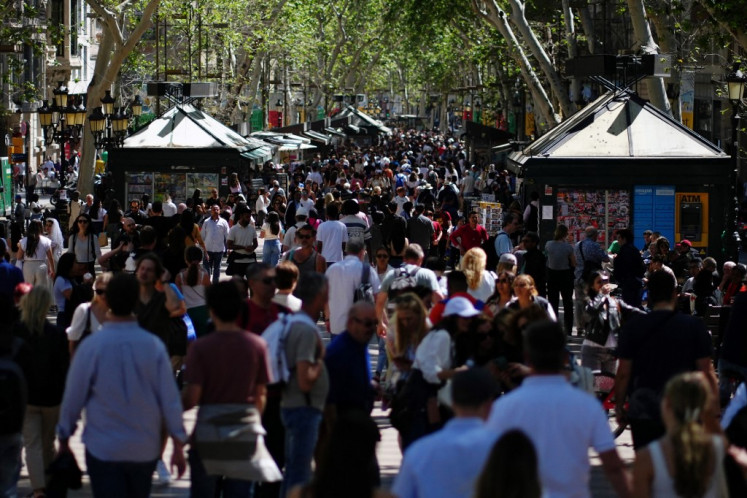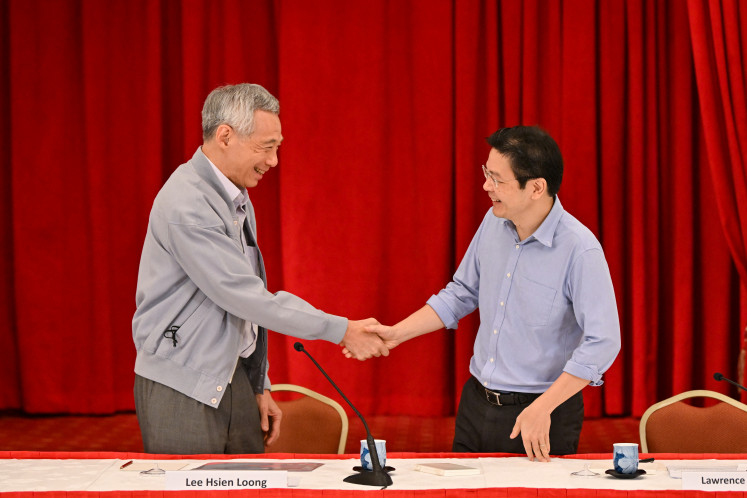Osamu Watanabe showcases mouth-watering 'Museum Cake'
Watanabe created 20 eye-catching pieces for his Museum Cake solo exhibition, all using the medium of cakes and sweets.
Change Size
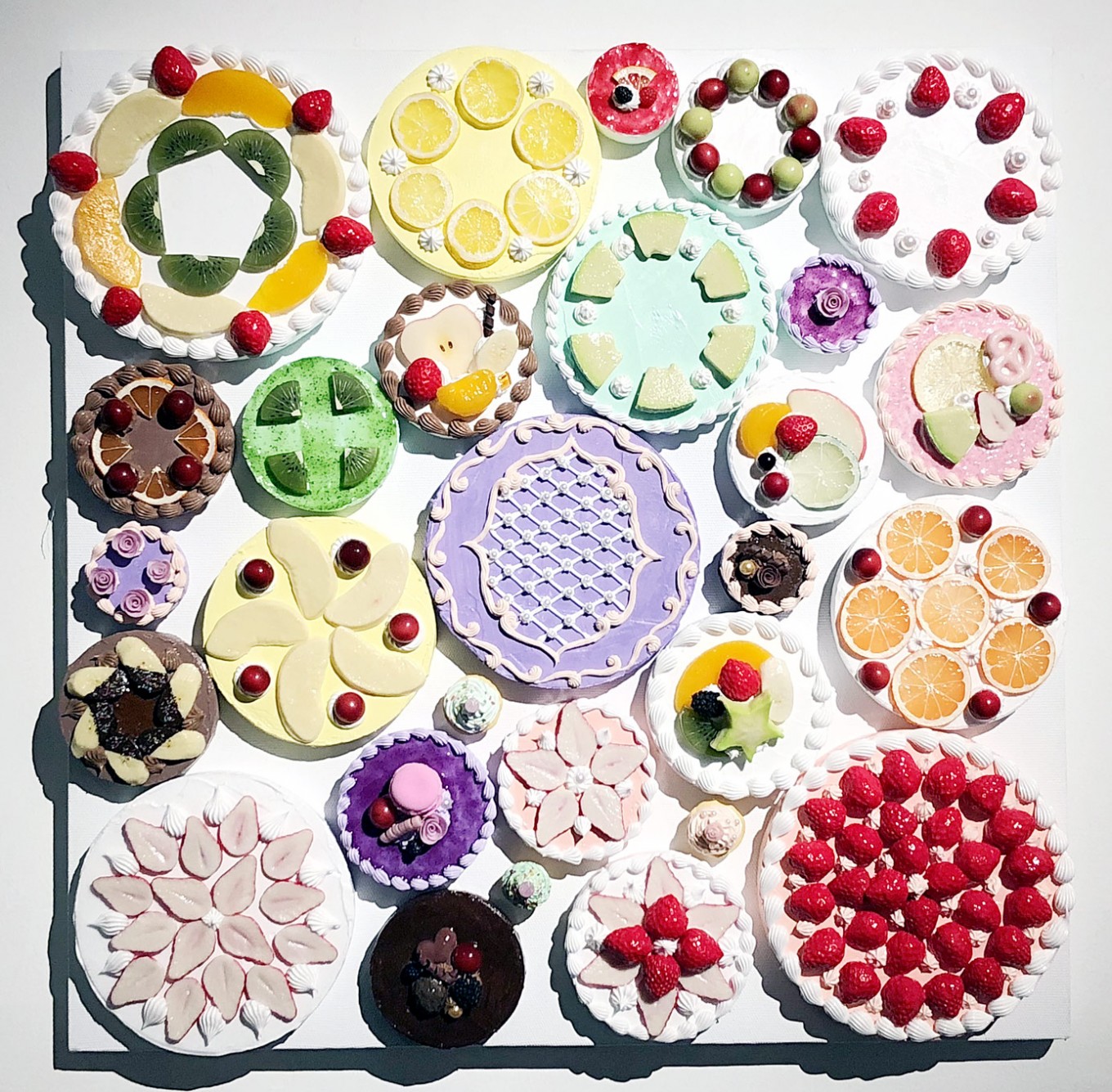 Mouthwatering: Osamu Watanabe’s painting titled Happiness is covered in delectable cakes of all sizes. (JP/Audrey Cahyadi)
Mouthwatering: Osamu Watanabe’s painting titled Happiness is covered in delectable cakes of all sizes. (JP/Audrey Cahyadi)
B
ursts of colors and never-ending sweets fill the museum’s floor as contemporary Japanese artist Osamu Watanabe debuts his mouth-watering exhibition in Indonesia.
Located at the Art:1 New Museum, Watanabe created 20 eye-catching pieces for his Museum Cake solo exhibition, all using the medium of cakes and sweets.
Composed of fresh fruits, whipped cream and melted chocolate, the Japanese artist caught the attention of many during the exhibition, which runs until Sunday at the Art:1 New Museum in North Jakarta.
Watanabe’s unique art style was inspired by his mother, who was a teacher at a baking school in Japan. As a kid, he spent time watching his mother bake and decorate numerous cakes, which left an impression on him as he was growing up and creating art. Hence, Museum Cake was born.
Through the many multicolored sculptures and paintings, Watanabe wanted to remind his audience of their sweet childhood memories — both literally and figuratively.
“Everyone has a sweet memory about childhood, so I wanted to remind them [of it] through my artwork,” said Watanabe.
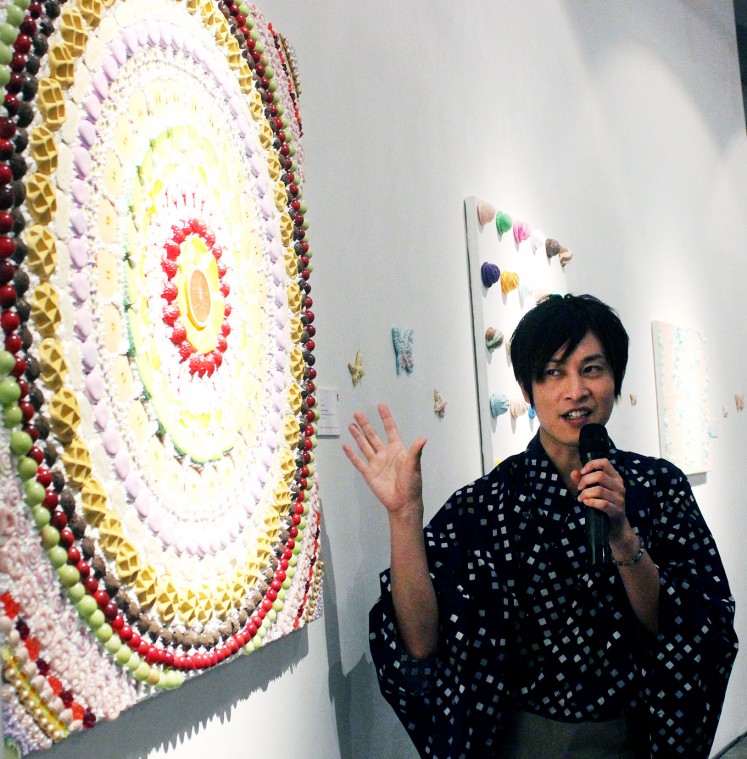
Watanabe was born in Yamaguchi prefecture, Japan, in 1980 and still lives in Japan to this day. He graduated from Tokyo Zokei University in 2003 with a major in design.
It did not take long for his popularity to grow when he decided to go down the unique path of using sweets as an art form. Oftentimes, he is considered one of the first artists to have used such a medium. With his growing fame, the Japanese artist has appeared in a number of Japanese TV shows like Tokyo Kawaii TV (NHK) and Tetsuko No Heya Special (specific program-Tetsuko-).
Although Watanabe’s pieces look extremely edible, the artist does not use real sweets or whipped cream in his artwork. Instead, he uses fake whipped cream — or modeling paste — which is specifically meant for art.
The use of modeling paste has had a big influence in the Japanese art world, with brands like Deco-Den creating their own versions for buyers to use as they please. For the sweets, Watanabe uses clay along with other materials to sculpt the various delicious-looking treats that are placed on top of the whipped cream.
Although it is Watanabe’s first exhibition in Indonesia, he has exhibited at many art galleries and museums around the world, such as Japan, China, Italy, Belgium, Turkey, the United States and Korea, since 2009.
The opportunity for him to hold an exhibition in Indonesia was presented by Art:1 New Museum when it contacted the Japanese artist about his one-of-a-kind artwork. After numerous visits to the capital, Watanabe quickly fell in love with the city and the colorful sweets that Indonesia produces.
“When the museum contacted me to have this exhibition, I came to Jakarta to look around the museum and the city and also the Indonesian sweets. I think this museum is very nice and Jakarta is also nice, despite the traffic, so I decided I wanted to do an exhibition here,” commented Watanabe with a smile.
For this particular exhibition, Watanabe created five animal sculptures, six skull sculptures, eight paintings and one wall piece that are all for sale to museum visitors.
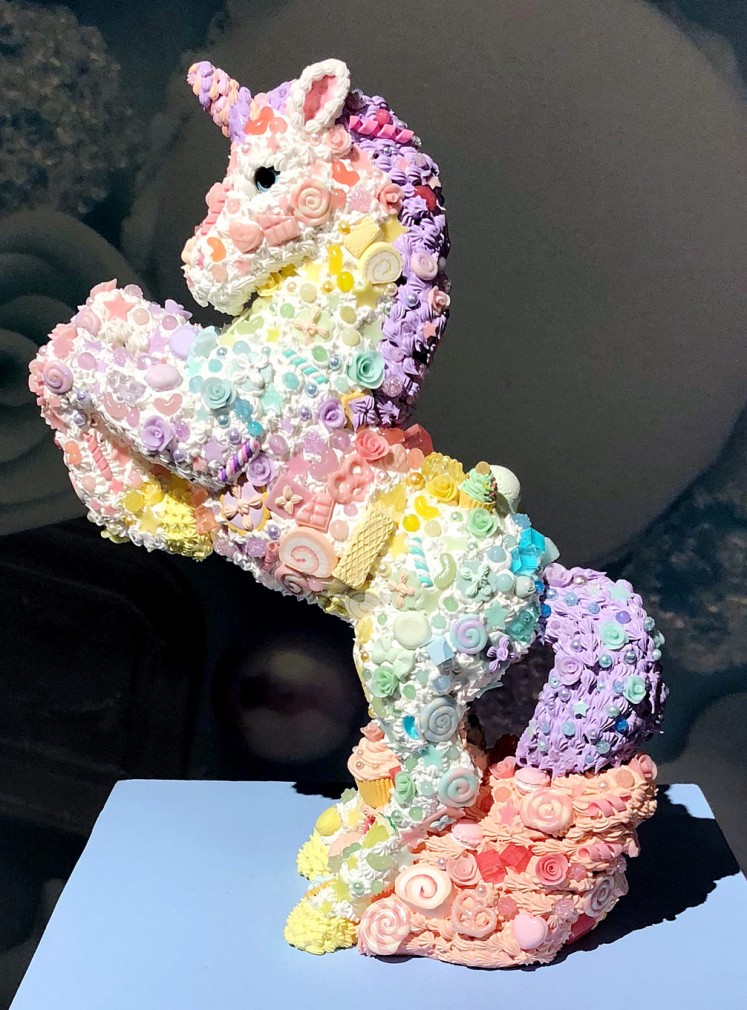
When asked which was his favorite piece in the exhibition, Watanabe answered immediately that it was his multicolored unicorn creation titledUnicorn.
With a mix of gypsum, modeling paste, clay, paraffin and resin, the piece also appeared to be the crowd’s favorite on opening night, with its pastel colors grabbing everyone’s attention.
“My favorite piece is the unicorn because of the color. I think my artwork is important in the color because it exaggerates [the sweets on the sculpture] more than the real-life [version of the] sweets,” said Watanabe.
A room filled with beautifully adorned skull sculptures by Watanabe also caught the attention of the crowd, some even buying the pieces to keep for themselves after the exhibition is over.
Among them was a red-and-white skull titled Heaven Pomegranate that fascinated visitors more than the rest. With a fake pomegranate sticking out of its top and its eye holes spilling with blood-red pomegranate seeds, the seemingly morbid creation is paired with intricately placed modeling paste and an assortment of delicious-looking red treats.
Watanabe’s inspiration behind his skull room was rooted in his home country. In Japan, a skull is commonly considered to be scary and a portrayal of death. Through his medium of sweets and vibrant colors, the Japanese artist hopes to shift that view to something lighter.
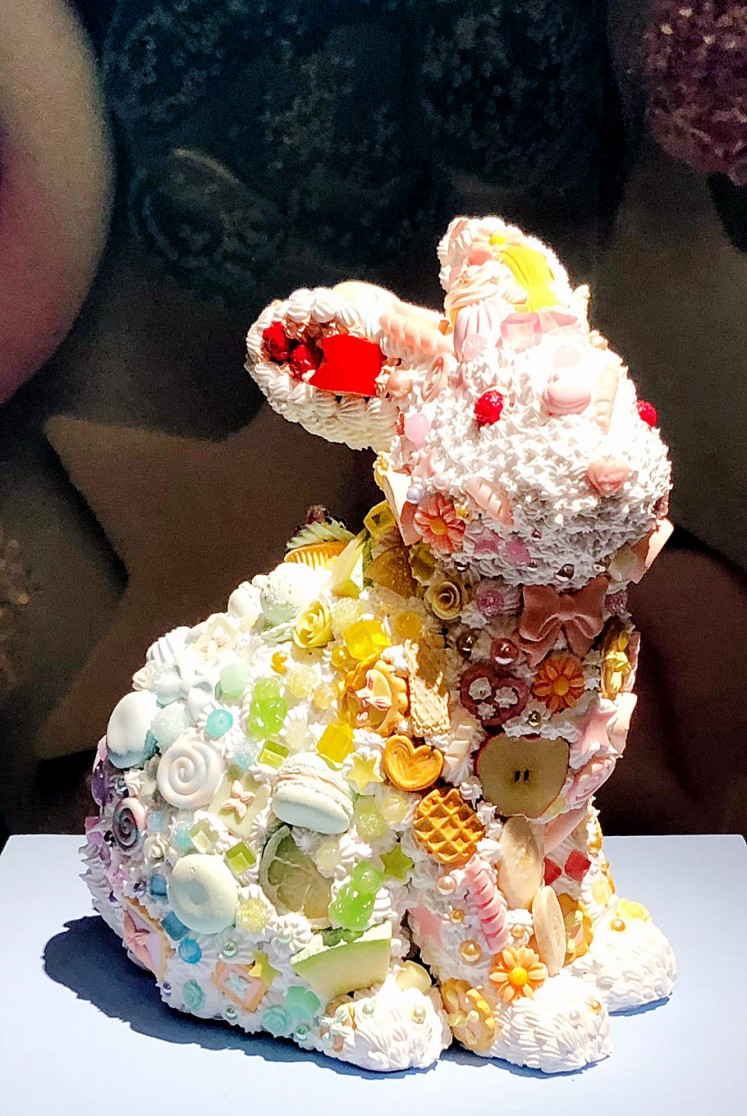
“In Japan, [a skull] is considered scary and is associated with death. I want to change the image through the decorations [I’ve added to them],” he said.
Other pieces at the solo exhibition are also connected to the Japanese artist’s roots, one of them being a painting of a phoenix made with pastel modeling paste against a gold background. In Japan, the phoenix is a symbol of happiness and Watanabe hopes that his piece will emphasize the meaning of the mythological creature.
“The phoenix is called Hou-ou in Japan […] and the bird symbolizes happiness. So, I want to emphasize that happiness through the decorations,” he said.
To make the opening night even more spectacular, Art:1 teamed up with Pipiltin Cocoa to create custom, edible art pieces for visitors. Everyone had a chocolate in their hands as they viewed Watanabe’s delectable exhibition.
— The writer is an intern at The Jakarta Post





